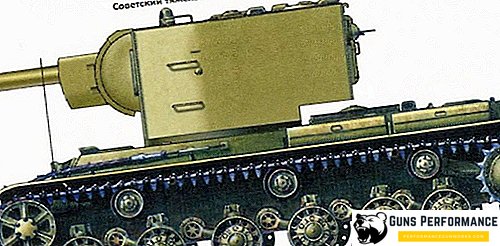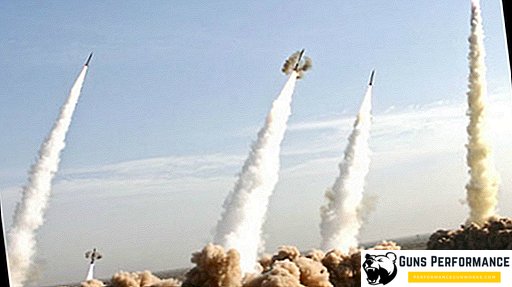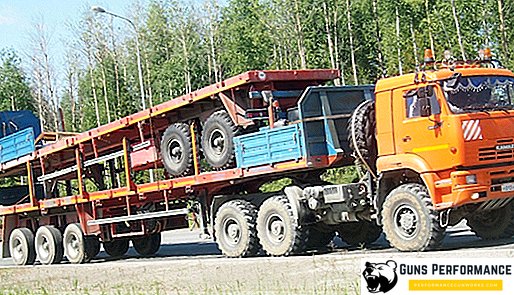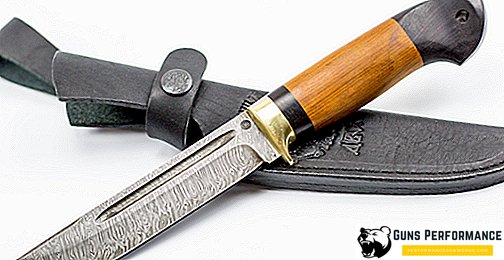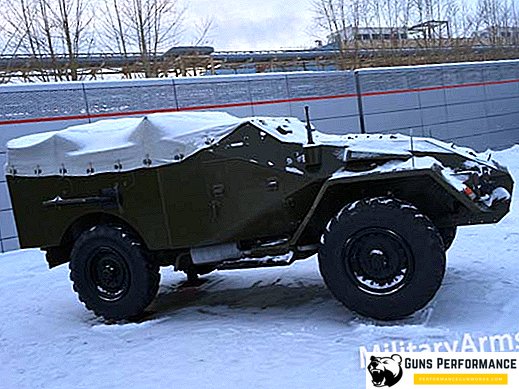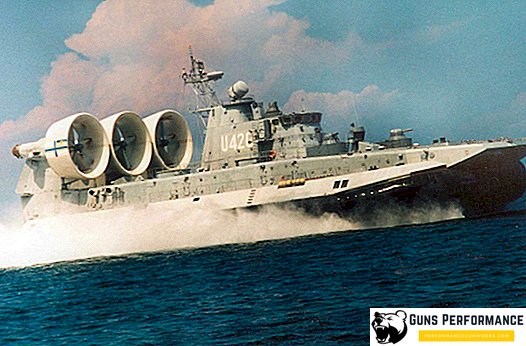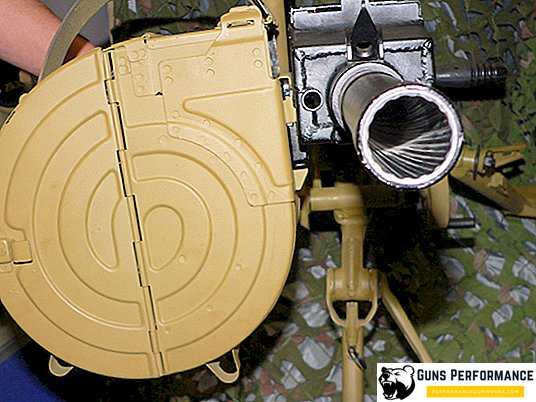
AGS-30 is a 30-mm Russian machine-gun grenade launcher, developed in the early 90s in the Tula Machine-Building Design Bureau. It was put into service in 1995, it is expected that in the future it should completely replace the famous AGS-17 "Flame".
The production of the AGS-30 heavy-duty grenade launcher was deployed at the Degtyarev plant, and since 2008 it has been engaged in the production of JSC "KZTA".
Like its predecessor, AGS-17 "Flame", the new product of Tula gunsmiths is intended to destroy enemy personnel, who are open, as well as in the trenches, on the reverse slopes of the heights or hidden in the folds of the terrain. Also from AGS-30, you can hit the enemy's unarmored equipment and its firing points.
AGS-30 is considered to be the weapon of the second generation, it was created taking into account the experience of using the grenade launcher AGS-17 "Flame" in the Afghan conflict and other local wars of the end of the last century. AGS-30 was used in the second Chechen campaign, in the war with Georgia in 2008, at present these weapons are used during the civil conflict in Syria.
The history of the AGS-30
The Soviet Union can be called the birthplace of automatic grenade launchers. Back in the 30s of the last century, domestic gunsmith designers proposed this fundamentally new type of small arms for a substantial increase in infantry firepower.

In 1934, a special design bureau was created, which was engaged in the development of automatic grenade launchers. It was led by Jacob G. Taubin. In 1935, a 40.6-mm automatic grenade launcher on a wheel machine was created in the design bureau; its firing range exceeded 1.2 thousand meters. However, this weapon was never put into service, the military preferred the 50 mm mortar. However, it should be noted that during tests, the Taubin's grenade launcher showed unsatisfactory reliability, there were a large number of delays and failures. Soon all the work on this project was abandoned. In 1941, Taubin was arrested and shot.
In the early 70s, a 30-mm automatic grenade launcher was developed in the OKB-16 under the leadership of several comrades and followers of Taubin. In 1972, it was put into service under the designation AGS-17 "Flame". This weapon was intended for the effective destruction of enemy infantry at distances comparable to the range of fire of small arms.
The automatic grenade launcher AGS-17 brilliantly showed itself during the hostilities in the harsh conditions of Afghanistan, in the North Caucasus, and it was also used in other armed conflicts of the last quarter of the last century.
In the late 80s, Tula designers began developing a new, more advanced and effective automatic AGS-30 grenade launcher. At the time of its creation, extensive experience in the use of AGS-17 was taken into account. The main task of the designers was to significantly reduce the mass of the grenade launcher while maintaining the basic combat characteristics of the weapon. The creation of AGS-30 was led by one of the most prominent Russian gunsmiths of our time, Vasily Petrovich Gryazev.

The fate of the new grenade launcher initially was not easy, he had a long time to wait for his time. At first, the GRAU believed that such a grenade launcher complex was simply not needed, and then, due to the difficult economic situation in the country, the process of rearming the army had practically ceased. Only in 1996, AGS-30 entered service with the Russian Ministry of Internal Affairs, and the armed forces accepted it into service only in 2002. AGS-30 was first demonstrated to the general public in 1999. There is information about the supply of AGS-30 Indian Army.
Description of the design of the grenade launcher AGS-30
As already mentioned above, the main task that the AGS-30 developers faced was a significant reduction in the mass of the grenade launcher. And I must say that the designers coped with it brilliantly: the mass of the AGS-30 together with the machine is only 16 kg. For comparison, we can say that its predecessor AGS-17 "Flame" weighs (together with the machine) more than thirty kilograms.
Reducing the size and weight of the grenade greatly increased the mobility of these weapons. Due to this, during a battle, the calculation can quickly change the place of deployment, shoot from window openings, the grenade launcher is very convenient to use in dense urban areas or in a battle on rugged terrain. AGS-30 is the first example of a weapon of this class, which together with a machine can be transported by one fighter.
The automatics of this weapon functions at the expense of the recoil energy of the free gate. After the shot, the powder gases act on the bottom of the liner and push the valve to the rearmost position, compressing the return spring. It completely absorbs the energy of the return of the shutter (that is, the automation works unstressed), which significantly increases the accuracy and accuracy of shooting. At the same time, the used liner is extracted, and a new cartridge is fed to the disillation line. Then the spring returns the bolt to the front position, with the shot being sent to the chamber.

The main "highlight" of the AGS-30, which allowed the creators to significantly reduce the weight of these weapons, is the use of the rolling effect of the free gate. This principle of operation of the automation significantly reduces the recoil of the weapon, ensures its overall stability and greatly simplifies the design.
The gunners managed to remove the hydraulic brakes from the design of the grenade launcher - a complex and heavy element, moreover, very troublesome to maintain. Many parts and assemblies of AGS-30 are made by stamping. The grenade launcher control mechanisms make it possible to fire at significant elevation angles. Safety of work with the weapon provides a safety lock
The grenade launcher comes from a metal non-sifter tape, completely analogous to that used on AGS-17. The tape is fed from a round box (similar to that used at AGS-17), with a capacity of 29 shots. The cartridge box is attached to the right side of the receiver of a grenade launcher.
Ammunition AGS-30 includes three types of ammunition: VOG-17M, VOG-17 and VOG-30. The standard set of grenade launcher includes three cartridge boxes and eighteen ribbons, each of which consists of ten links. Curb shots are packed in special cardboard sleeves and placed in sealed cartridge cases, each of which holds 48 shots. Combat shots and cartridge boxes with them are marked in black.
AGS-30 has a rifled barrel, which, if necessary, can be quickly replaced with a spare one. The maximum rate of fire grenade is 400 rounds per minute. After 180 shots - while maintaining intense fire - the barrel of the grenade must be cooled. Air cooling, but if necessary, water can also be used for this purpose.
The AGS-30 grenade launcher has significant changes in the controls, compared with the AGS-17. Horizontal guidance arm, as well as the trigger of the AGS-30 is not located on the body of the grenade launcher, but on a tripod machine.

Shooting from AGS-30 can be carried out both on a hinged and on a flat trajectory. For accurate targeting, the grenade launcher is equipped with a PAG-17 optical sight, which provides direct-fire shooting, as well as firing from closed firing positions. The optical sight is mounted on the left side of the weapon, its multiplicity is a multiplicity of 2.7.
If necessary, the gunner can use a mechanical sight, it consists of a pillar and a front sight. The fly can be adjusted, it has several fixed positions, and its base indicates the range in hundreds of meters.
The firing rules of the AGS-30 are simple, the calculation of the grenade launcher consists of two fighters: a sub-carrier of ammunition and a gunner. However, this weapon can be serviced by one person. If necessary, a thermal sight can be installed on the AGS-30.
The grenade launcher is equipped with vertical and horizontal guidance mechanisms. Its supports (both front and rear) are adjustable, which allows the calculation to change the height of the line of fire and makes the grenade launcher very convenient for firing from different positions: “sitting”, “lying” or “from the knee”. In the stowed position, the AGS-30 folds compactly and can be carried behind its back.
Characteristics of TTX AGS-30
Below are the main characteristics of the AGS-30:
- caliber, mm - 30;
- sight - optical, mechanical;
- the multiplicity of the optical sight - x 2,7;
- firing range sighting, m - 1700;
- rate of fire, shots / min - 400;
- weight with machine, kg - 16.5;
- initial grenade speed, m / s - 183;
- dimensions, mm - 1165x735x490.


